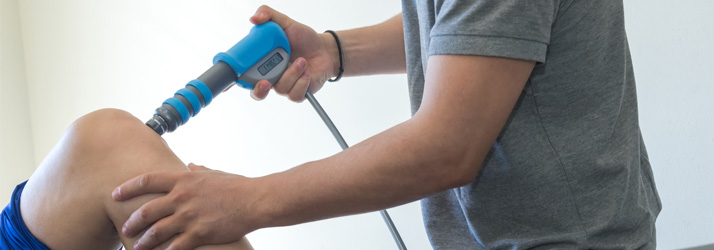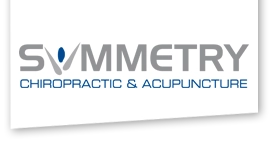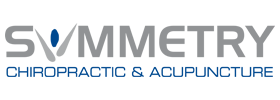SoftWave & Shockwave Treatments That Keep You Active in Naperville IL
SoftWave And Shockwave Treatments That Keep You Active in Naperville IL

Staying active is essential for maintaining overall health, but pain and injuries can quickly derail your mobility and quality of life. Fortunately, innovative therapies like SoftWave and Shockwave treatments are offering new hope for individuals dealing with chronic pain, sports injuries, or recovery after surgery. These non-invasive, drug-free solutions are gaining popularity due to their effectiveness and minimal downtime, making them ideal for people who want to remain active without resorting to surgery or long-term medication. Contact our Naperville IL chiropractic clinic today to learn more.
Whether you're an athlete looking to accelerate recovery, a senior aiming to maintain mobility, or simply someone trying to avoid chronic pain, SoftWave and Shockwave therapies could be the game-changer you need. In this blog, we’ll explore what these treatments are, how they work, and why they are quickly becoming go-to options for pain relief and rehabilitation.
What Is SoftWave Therapy? Understanding the Basics In Naperville IL
SoftWave therapy is a cutting-edge, non-invasive treatment that uses unfocused acoustic waves to stimulate healing in the body. Originally developed in Europe, this advanced medical technology has gained traction in the U.S. for its ability to reduce pain and inflammation, enhance circulation, and accelerate tissue repair—all without surgery or medication.
The therapy works by delivering low-intensity shockwaves through a specialized device applied to the skin over the affected area. These shockwaves trigger biological responses at the cellular level, promoting improved blood flow and the recruitment of stem cells. This helps the body repair damaged tissues more efficiently, making SoftWave an attractive option for patients dealing with soft tissue injuries, joint pain, tendonitis, and other chronic musculoskeletal conditions.
Unlike some therapies that may only provide temporary relief, SoftWave aims to address the underlying cause of pain by stimulating regenerative processes. The treatment is typically quick—sessions last between 10 to 20 minutes—and most patients report feeling little to no discomfort during the procedure. The lack of downtime also means individuals can return to daily activities almost immediately.
SoftWave therapy is increasingly being used by chiropractors, physical therapists, and sports medicine professionals to treat a wide range of conditions. For people looking to stay active and avoid invasive procedures, SoftWave offers a powerful solution grounded in the body’s natural healing mechanisms.
How Shockwave Therapy Works and What Conditions It Treats
Shockwave therapy is a non-invasive treatment that uses high-energy acoustic waves to promote healing and reduce pain. Unlike SoftWave, which uses unfocused waves, traditional shockwave therapy delivers focused energy directly to the affected area, making it especially effective for targeting deeper tissues and stubborn injuries. This mechanical stimulation enhances circulation, breaks up calcified tissue, and triggers a healing response in muscles, tendons, and bones.
The treatment is widely used for chronic tendinopathies, plantar fasciitis, tennis elbow, calcific shoulder tendonitis, and even delayed bone healing. It’s particularly beneficial for patients who haven’t found relief through conventional methods like physical therapy, medications, or injections. Shockwave therapy not only speeds up recovery but can also prevent the need for surgical intervention in many cases.
Patients typically undergo a series of treatments, often spaced over several weeks, depending on the severity and nature of the condition. The sessions are brief, usually lasting around 15 to 30 minutes, and require no anesthesia. Most patients describe the sensation as mildly uncomfortable but tolerable.
As the treatment progresses, patients often experience a gradual reduction in pain and an increase in mobility. Because it works by encouraging the body to heal itself, shockwave therapy aligns well with a holistic approach to health—helping individuals return to their activities stronger and faster. This makes it an attractive choice for athletes and anyone with an active lifestyle.
Key Differences Between SoftWave and Shockwave Treatments
Although SoftWave and Shockwave therapies share similar goals—stimulating healing and reducing pain—they differ significantly in technology, application, and therapeutic effects. Understanding these distinctions is crucial for choosing the most suitable option based on your condition and activity level.
SoftWave therapy utilizes unfocused acoustic waves that spread over a larger treatment area. This broader coverage allows for gentle, uniform stimulation of tissues, making it ideal for early-stage injuries, widespread inflammation, or sensitive areas. It is often associated with a high degree of comfort during treatment, minimal side effects, and quick recovery. Patients typically feel little to no pain during sessions, which contributes to high tolerance and adherence to treatment plans.
Shockwave therapy, on the other hand, delivers focused acoustic pulses directly to the targeted site of injury. This concentrated approach enables deeper tissue penetration and more aggressive stimulation, which is beneficial for chronic or calcified conditions like long-standing tendonitis or bone-related issues. However, the treatment can be slightly more uncomfortable due to the intensity of the energy delivered, though it remains non-invasive and safe.
Another key difference lies in their mechanism of action: while both stimulate cellular repair and blood flow, Shockwave is more effective at breaking down calcifications and scar tissue, whereas SoftWave excels in promoting regenerative activity across larger surface areas.
For patients looking to remain active, both treatments offer compelling benefits—but the best choice often depends on the type, location, and severity of the condition. Consulting with a healthcare professional can help determine which therapy will yield the best results for your lifestyle and recovery goals.
Benefits of Using SoftWave and Shockwave for Pain Management
The primary appeal of both SoftWave and Shockwave therapies lies in their ability to manage pain and accelerate healing without invasive procedures. These treatments represent a shift toward regenerative medicine, focusing on the body’s ability to repair itself rather than masking symptoms with medication or resorting to surgery.
One major benefit is reduced pain. Both therapies stimulate cellular activity and increase blood flow, which helps flush out inflammatory agents and encourages tissue regeneration. This makes them highly effective in treating conditions such as tendonitis, joint pain, plantar fasciitis, and chronic back pain. As a result, patients often experience significant pain relief even after a few sessions.
Another advantage is improved mobility. By reducing pain and inflammation, these therapies restore range of motion and function, which is especially beneficial for athletes, older adults, and people recovering from orthopedic injuries. They also aid in faster recovery, meaning you can return to daily activities or sports with less downtime.
SoftWave and Shockwave therapies are also drug-free and non-invasive, reducing the risk of side effects commonly associated with medications and surgical procedures. This is particularly important for individuals who want a natural approach to healing or who may not be candidates for surgery due to age or underlying health conditions.
Moreover, these treatments can be used in conjunction with other therapies like physical rehabilitation or chiropractic care, enhancing their overall effectiveness. Ultimately, the goal is to support long-term healing and help individuals remain active and pain-free without relying on temporary fixes.
Ideal Candidates for SoftWave and Shockwave Therapy
Not everyone responds the same way to a treatment, but SoftWave and Shockwave therapies are suitable for a wide range of individuals seeking non-invasive solutions for pain and recovery. If you're wondering whether these treatments might be right for you, consider the following categories of ideal candidates:
- Athletes with repetitive stress injuries such as tendinitis, shin splints, or tennis elbow.
- Individuals with chronic musculoskeletal pain who haven’t responded well to medications or physical therapy.
- Patients recovering from orthopedic surgeries who need to boost tissue repair and reduce inflammation.
- Older adults experiencing degenerative joint or tendon conditions looking for non-surgical options.
- People with plantar fasciitis, calcific tendonitis, or frozen shoulder where conventional therapies have fallen short.
- Active individuals aiming to prevent injury by addressing soft tissue imbalances early.
These treatments are also ideal for those seeking to avoid long-term medication use, as they provide natural pain relief and promote healing without pharmaceutical intervention. Additionally, they are safe for most age groups and can often be personalized to suit specific needs and comfort levels.
However, individuals with certain conditions—such as blood clotting disorders, active infections, or those with pacemakers—should consult with their healthcare provider to determine suitability. A proper evaluation ensures that SoftWave and Shockwave therapies can be safely and effectively integrated into a comprehensive care plan.
What to Expect During a Treatment Session
If you’re considering SoftWave or Shockwave therapy, it’s natural to wonder what the experience entails. These treatments are straightforward and designed with patient comfort and efficiency in mind. Here’s what you can typically expect during a session:
- Initial Assessment: Your provider will begin by evaluating your symptoms, medical history, and physical condition to determine which therapy is appropriate. This ensures the treatment is customized to your specific needs.
- Preparation of the Treatment Area: The skin over the target area will be cleaned, and a conductive gel will be applied to help transmit the acoustic waves efficiently.
- Application of the Device: A handheld device is used to deliver SoftWave or Shockwave pulses to the treatment area. The practitioner will move the applicator methodically across the region while adjusting settings based on your feedback.
- Sensation During Treatment: SoftWave is generally very comfortable, often described as a gentle tapping or pulsing. Shockwave may feel more intense, sometimes like a series of sharp taps, but it's usually well-tolerated.
- Session Duration: Treatments typically last between 10 and 30 minutes depending on the therapy and size of the area being treated.
- Post-Treatment Guidance: You’ll receive aftercare instructions, which may include light activity recommendations or temporary restrictions.
Most people resume normal activities immediately after their session, making these therapies especially attractive for active individuals who want minimal disruption to their daily routines. The number of sessions required varies, but many patients notice improvements within just a few visits.
If you’re ready to explore the benefits of SoftWave and Shockwave therapy to stay active and pain-free, Symmetry Chiropractic & Acupuncture is here to help. Led by Dr. Timothy Erickson, our team specializes in cutting-edge, non-invasive treatments designed to support your healing and mobility. Conveniently located in Naperville, Illinois, we’re dedicated to helping you live your healthiest, most active life. Contact us today to schedule your consultation!
OFFICE HOURS
Monday
9:30am - 12:30pm
3:00pm - 6:00pm
Tuesday
9:30am - 12:30pm
3:00pm - 6:00pm
Wednesday
9:30am - 12:30pm
3:00pm - 6:00pm
Thursday
9:30am - 12:30pm
3:00pm - 6:00pm
Friday
9:30am - 12:30pm
3:00pm - 6:00pm
Saturday
9:30am - 12:30pm
Sunday
Closed
Symmetry Chiropractic & Acupuncture
3108 Illinois Rte 59 Ste 124
Naperville, IL 60564



